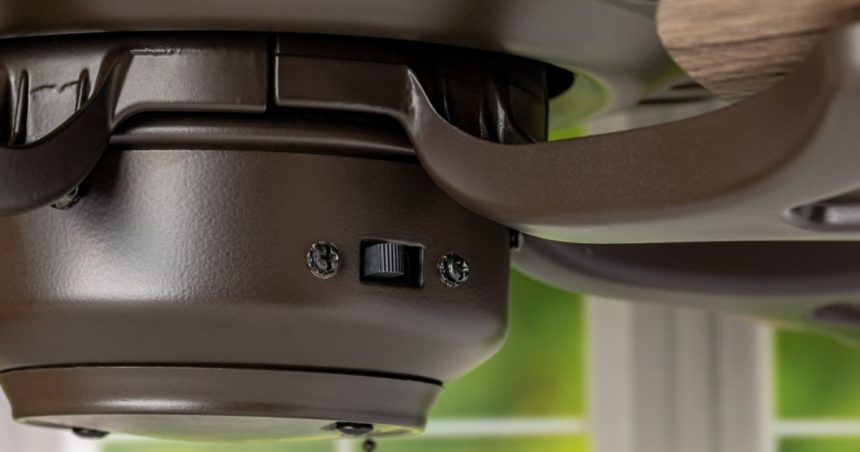A simple switch on your ceiling fan could be the key to keeping your cool (and your power bill down) heading into 2025 as the sweltering summer sun starts to kick in.
The Melbourne Cup public holiday here in Victoria didn’t disappoint yesterday as the usually-chilly capital saw temps soaring as high as 27 degrees with not a cloud in sight.
Sure, this made for perfect pub weather, but as I peeled off my finest raceway duds (the one suit I own), set my AC to cold and splayed out under the ceiling fan at full blast for the first time this year, a voice seemed to ring out of nowhere telling my that my fan was turning in the wrong way.
Turns out that voice wasn’t a frugal stranger breaking into my home but instead a memory of my dad when I first moved out reminding me to change my fan settings for summer or “pay extra like a d*ckhead”.
And the man was on to something. Apparently, nearly all fans have this nifty little switch that lets you change up which way the blades spin depending on whether it’s hot or cold – resulting in a bigger impact on the room temp (and your power bill) than you might think.
How it works
The ‘science’ behind the savings is simple. Thanks to the angle of the blades, the counterclockwise movement of the fan helps remove warm air from around our bodies to create a ‘wind-chill effect’ and cool us down in summer.
In winter, throwing that bad boy in reverse does exactly the opposite to redistribute the warm air around a room.
And better yet – it actually works. After turning off the AC, I flicked the switch above the blade, planted myself firmly in front of the TV and waited for the fan’s counterclockwise cooling to kick in.
It might not have been quick or as chilly as my AC, but within 30 minutes I was surprised at how effective the small ceiling fan was at turning the room from a sweaty swamp into a balmy summer set-up.
Guess the beers didn’t hurt either, so results may vary.
Combo for the best savings results
But the real benefit of setting your ceiling fan to summer mode isn’t in actually cooling your house down.
While a standard ceiling fan uses about 50 watts per use on average, which is a lot cheaper than the 3,500 watts of power used by the high-efficiency central air conditioning unit, the real trick for those who don’t want to compromise on indoor temp is to combo the two together.
Thanks to the fan continually pulling hot air from around the room, this one-two punch of AC and ceiling fan actually makes things easier on the air conditioner unit – leading to a lot less power being used over longer periods of time.
The exact figure will vary depending on the heat where you live, but the general rule of thumb is using your ceiling fans saves you approximately 12 per cent on your energy costs year-round.
For the best savings results, experts recommend setting your fan at a lower speed (mine is sitting at 1) and capping the AC at around 24 or 25, depending on how hot it is.
Your fan (almost) definitely has a switch
Despite the savings to be had, it turns out a lot of Aussies still don’t know about the switch and end up paying extra, as my dad would say, “like a d*ckhead”.
One quick Google search and you’ll find hundreds of TikTok videos from helpful cleaning influencers (yes, that’s a job) with thousands of comments from users claiming they had never heard of the household hack until now.
@cleanlikeapro Aussies! Time to switch your fans to winter mode 🥶 #aussiewinter #ceilingfans #fancleaning #frozen ♬ Frozen – Madonna & Sickick
“Get out of town that’s a thing?” said one user below this video posted by Aussie cleaning experts ‘Clean Like A Pro’ in preparation for this year’s winter.
“Thought i was the only one that new about this,” said another.
While most of us seem to be clueless about the feature, this switch has become basically commonplace over the last two decades, so your fan is almost definitely hiding away some way to change the direction of its blades.
If you can’t see a cord or you don’t have a remote control, try looking for a small ‘reverse’ switch above the blade.
And while you’re up there, don’t forget to give the fan a good clean either as reversing the blades can cook up a nice messy dust storm (speaking from experience).







